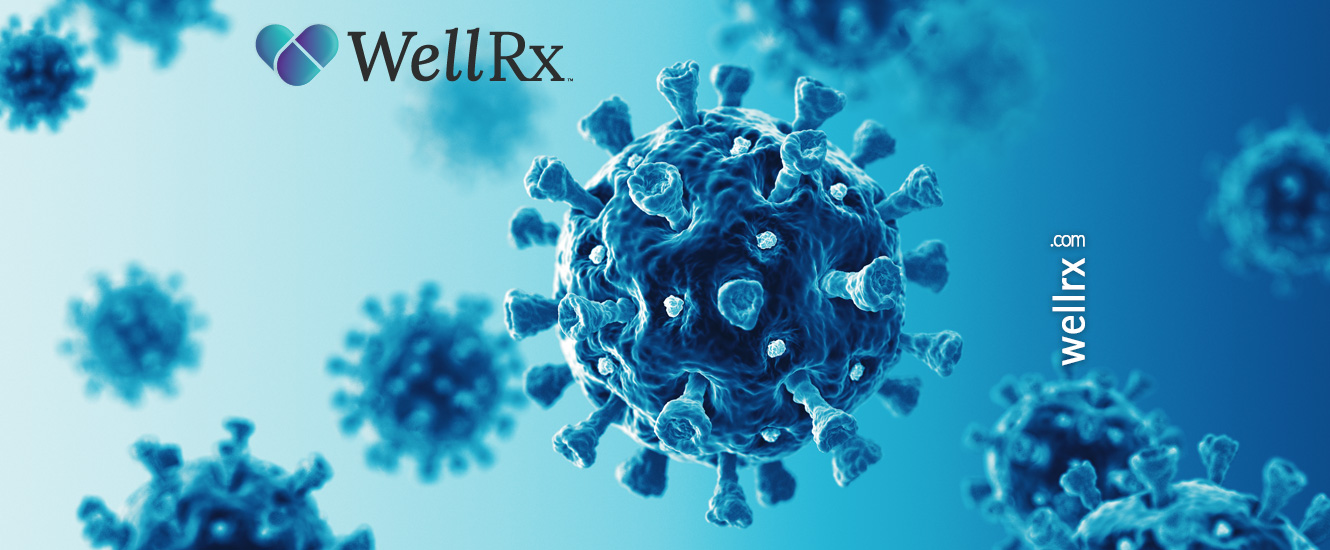When you reflect three years to the year 2020, words like quarantine, social distancing, social isolating, and stay-at-home orders probably come to mind. You may remember a shortage of toilet paper and bottled water, feelings of fear and uncertainty, and an almost immediate change to your daily routine. Today, we will take a look back at the transformative last three years to gain insight on the detrimental impact COVID-19 has had and explore whether COVID-19 has resulted in positive changes.
The COVID-19 Timeline
It is largely beneficial to have an idea of the timeline of the Coronavirus’s progression. When you think back to “COVID times,” you probably think of late winter or early spring of 2020. What may surprise you is that the virus actually garnered attention in China in December 2019. Here’s what we know about the timeline of the Coronavirus, which has been summarized. If you would like a more detailed timeline you can visit the Centers for Disease Control and Prevention (CDC).
December 2019:
- Patients in China reported flu-like symptoms that were not responding to traditional treatment approaches.
- The World Health Organization (WHO) office in China is informed of the illness, which is believed to have come from a seafood market in China.
January 2020:
- WHO finds evidence of human-to-human transference of COVID-19.
- The CDC confirms the first cases in the United States.
- A 14-day quarantine period is required.
February 2020:
- The virus is officially named by the WHO as COVID-19.
March 2020:
- COVID-19 has spread to 114 countries, and more than 118,000 cases are confirmed.
- 4,291 people die due to COVID-19.
- The WHO officially declares COVID-19 a public emergency.
- A travel ban is issued for non-U.S. citizens traveling from 26 different countries.
- States start to implement shutdown orders to prevent the spread and social distancing measures are put in place.
April 2020:
- Certain states start lifting the stay-at-home order.
- Guidelines encourage wearing a mask when in public.
May 2020:
- The unemployment rate in the United States hits 14.7%, which is the highest since the Great Depression.
- The death toll in America reaches more than 100,000 people.
July 2020:
- It’s learned that COVID-19 can spread through the air.
October 2020:
- In the United States, food insecurity reaches an astounding 52 million people, which is 17 million more people than before the pandemic started.
- Cruise ships are allowed to sail under certain conditions.
January 2021:
- The death toll in the United States reaches more than 400,000.
- The “Gamma” and “Beta” variants are identified in the United States.
- More than 23 million U.S. citizens have received a COVID-19 vaccine.
- Over 100 million cases reported in the United States.
February 2021:
- More than 500,000 deaths have occurred in the United States.
- More than 4 million Americans leave the workforce.
- Social distancing in schools is reduced to 3 feet.
April 2021:
- Vaccinated individuals are allowed to safely travel.
- More than 200 million vaccines have been distributed in the United States.
May 2021:
- The “Delta” variant becomes the most prominent variant.
November 2021:
- Non-U.S. citizens traveling to the United States are permitted to but require proof of full vaccination status.
- “Omicron” variant is identified as a major concern.
December 2021:
- First case of the “Omicron” variant is detected in the United States.
- Booster shots are recommended.
- More than 800,000 people in the United States have died.
- Isolation period is shortened to 5 days.
January 2022:
- The United States reports 1 million new COVID cases, which is a 50% increase in 1 week.
- Masks are emphasized.
March 2022:
- Vaccination access increases with 56% of the world’s population being fully vaccinated (10 billion people).
May 2022:
- Masks are recommended by the CDC but not legally mandated.
- Deaths in the U.S. reach 1 million.
The most recent development is the end of the COVID-19 Public Health Emergency Act that expired on May 11, 2023, as a result of a decline in the number of COVID deaths since 2021 (95%) and a 91% reduction in COVID hospitalizations.
Changes as a Result of COVID-19
COVID has inherently changed the landscape of our lives. Some of us lost loved ones to the deadly virus, others may have lost their jobs, and others may have experienced physical and mental health challenges as a result of the pandemic.
As a result of the global pandemic:
- The unemployment rate reached the highest it has since 1986 with 20.5 million adults in the U.S. (14.7% of the population) out of work.
- A survey conducted in June 2020 showed that 11% of participants seriously thought about suicide and 41% reported struggling with significant mental health challenges.
- In February 2021, approximately 2.5 million women and 1.8 million men in the U.S. left the workforce since the beginning of the pandemic.
- As of May 2021, approximately 5.1 million women left the workforce when schools and childcare centers closed; today there are still 1.3 million women that remain out of work.
- Today, only 56% of women in the United States are working in salaried positions.
- 5 million children across the world lost a primary or secondary caregiver due to COVID-19.
- We are experiencing the largest global increase of unvaccinated babies and children in 20 years as a result of the strain COVID-19 has put on the healthcare system.
- COVID-19 was the third leading cause of death for two years in a row with heart disease and cancer being the two leading causes of death.
Has the Pandemic Contributed to Any Positive Outcomes?
It can be difficult to find a silver lining in a pandemic that has taken the lives of millions of people across the world. However, finding the positives (no matter how small) can help us tolerate a very challenging situation, such as a global pandemic.
One of the biggest changes that has come as a result of COVID-19 is the way we connect with others and conduct business. COVID showed that many of us can complete our jobs remotely which, for many of us, may mean a better work-life balance, less money spent on gas, and less stress related to travel time and traffic. In fact, from 2019-2021, the number of people in the United States who worked from home tripled from 9 million people to 27.6 million people.
COVID-19 forced us to take inventory of what is important in life. We used the power of technology and social media to stay connected with loved ones we couldn’t see. Many people made lifestyle changes as a result of the pandemic and focused on increasing pleasant activities through the development of new hobbies and pursuits.
As a result of the stay-at-home orders, there weren’t as many people driving their vehicles as in pre-pandemic times. As a result, fewer travelers meant less carbon dioxide emission and fewer injuries as a result of driving, and it allowed our Earth to get much-needed rest. This rest supported natural vegetation across the globe.
What We’ve Learned
COVID-19 brought about many challenges that many of us are still facing today. If you are one of the many people who noticed an increase in feelings of anxiety or depression as a result of COVID-19, you are not alone. Research shows that in the initial year of the pandemic, incidents of anxiety and depression increased by 25% across the world. This is believed to be a result of many factors including an increase in stress related to social isolation, financial and occupational stress, and worry over the safety and well-being of loved ones.
As a result of the increase in mental health disorders across the world, the World Health Organization and other agencies have invested resources to improve access to mental health care. There has been a recent emphasis on the importance of mental health and a surge of online mental health platforms that help to make accessing mental healthcare easier.
If you are one of the many people struggling with your mental health, talk to your doctor. Your doctor can work with you to create a treatment plan that can address your needs or your doctor can refer you to a mental health professional who can. If medication is part of your treatment plan, ScriptSave WellRx offers a free prescription savings card that can help save you up to 80% on your medications. Most people who use the discount savings card save around 65%.
Jacquelyn Buffo began writing at the age of 10 when she won a county-wide essay contest explaining why her mother is worth her weight in gold. Since that time, she has written for several newspapers and a health and wellness blog. Her education and experience is in mental health and addiction. She is a licensed counselor and currently provides therapeutic services on an outpatient basis. Her counseling and substance abuse experience includes inpatient residential, in-home, and early recovery counseling. She is a certified addiction specialist and is working on obtaining her certification in Dialectical Behavioral Therapy. She also specializes in working with pregnant and post-partum women and has received advanced training on women's health.
Resources:
- Centers for Disease Control and Prevention. (2023). CDC museum Covid-19 timeline.
- S. Department of Health and Human Services. (2023). Fact Sheet: End of COVID-19 public health emergency.
- United States Census Bureau. (2022). S. Census bureau releases new 2021 American community survey 1-year estimates for all geographic areas with populations of 65,000 or more.
- Psychology Today. (2021). 10 Positive Outcomes of the Pandemic | Psychology Today.
- Choudhury, P.P., Kannappan, S.R., & Khlem, R. (2022). Coronavirus disease-2019: Challenges, opportunities, and benefits in India.
- The World Health Organization. (2022). COVID-19 pandemic triggers 25% increase in prevalence of anxiety and depression worldwide.













 Store & manage your medication list
Store & manage your medication list Medication pricing updates
Medication pricing updates Pill & refill reminders
Pill & refill reminders Medication journal & mood log
Medication journal & mood log